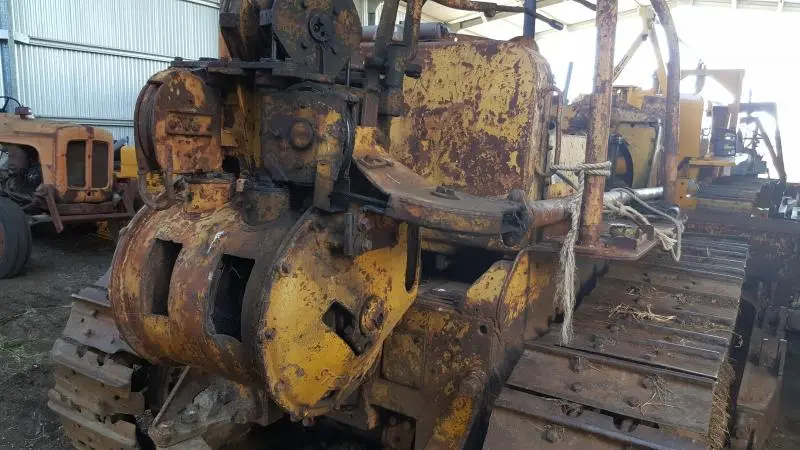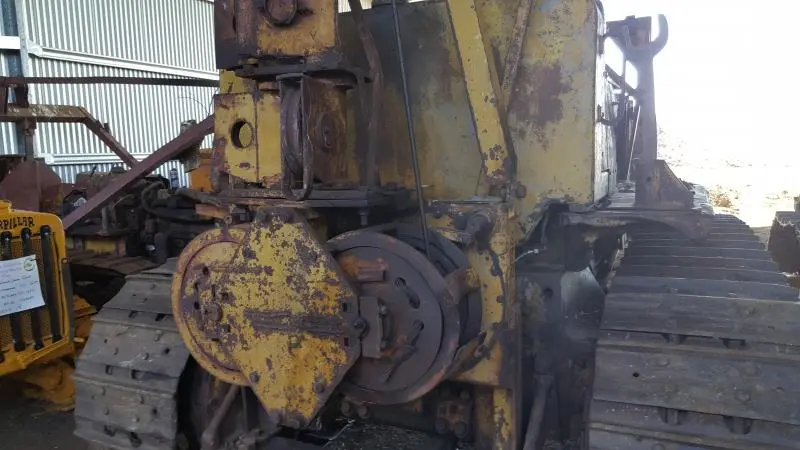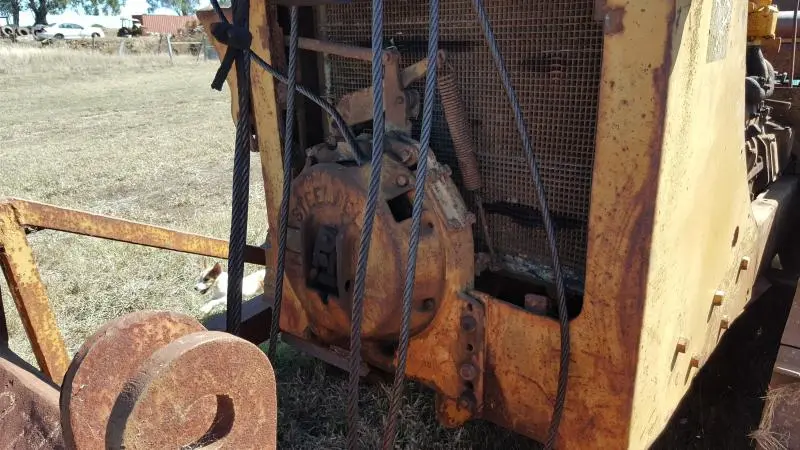Thanks for the tip. I'm in SE Missouri about 2 hrs south of St. Louis.
7up and Pete. Thanks. This really helped me understand operation of the blade. Even though the dozer sat most of the last three years, I think it has been pretty well maintained according to a guy who knew of the machine and its owner. Based on the explanation you provided, I think its a combination of the dozer sitting and operator error...mostly operator error. My son and I were babying the lever up and down mainly because the guy I bought it from was emphatic that you don't let the blade slam on the ground. So we've been slowly moving the lever away to ease the blade down, and slowing pulling the lever in to move it up slowly.
How do you avoid letting the blade hit the ground hard if you push the lever away quickly? I haven't tried it yet because I'm not at the farm, but if I move the lever to the right quickly, do I have to wait for the blade to respond before I move the lever back to a neutral position? Or, will it catch up to my action? Or, do I move the lever quickly and try to "catch" the blade before it hits the ground by moving the lever back to a neutral position quickly?
I'll have to get the CCU serial number when I get home tonight. I have the tractor parts, service and operating manuals, but it would be helpful to have one for the CCU as well.
Thanks again for the help.
there is two different things that go on in the ccu depending on which way you move the lever.
there is a brake that holds the drum from turning and keeps the implement in the desired position when the lever is in neutral, the drum is not turning, and the clutch that is used to engage the drum to lift the equipment is completely disengaged.
when you go to lower the blade you can "feather" it down depending on how far you push the lever away from you. as the drum turns to let out cable the only thing that is wearing would be the brake friction plate. the guys in the know can "catch" the blade before lettng it hit the ground by not letting the lever snap back to neutral which instantly applies the brake. letting the blade hit the ground can cause the cable to unwind further than necessary off the drum and may catch or cause a kink. on the bigger units in cold weather, it was possible to shear the pin off the front of the c-frame that holds the blade, back in the 60's our local hydro company was building an earthen dam, they had d9's with cable bull blades. the operators in the winter were known to drop the blade onto the ground and the momentum and weight of the c-frame would shear the pin off, then they got to go get coffee while the mechanic had to fix the dozer.
when you pull the lever towards you to lift the blade, you want quick, full lever action to. the lever is releasing the brake, and engaging the clutch simultaneously so that the blade does not begin to fall due to the brake being released and the clutch not having enough friction to lift it yet. it is much the same as any manual clutch, you want to limit slipping the clutch to reduce friction heat and unnecessary wear on the clutch friction surface and lining.
hopefully this all makes sense,
one other thing that no one has mentioned:
i was always told from the time i was a little guy that you NEVER get in between the c-frame or blade arrangement and the cat while the engine is running on a cable machine, NEVER make adjustments on the clutch or brake while the engine is running. you can be squished and killed.
there is two different things that go on in the ccu depending on which way you move the lever.
there is a brake that holds the drum from turning and keeps the implement in the desired position when the lever is in neutral, the drum is not turning, and the clutch that is used to engage the drum to lift the equipment is completely disengaged.
when you go to lower the blade you can "feather" it down depending on how far you push the lever away from you. as the drum turns to let out cable the only thing that is wearing would be the brake friction plate. the guys in the know can "catch" the blade before lettng it hit the ground by not letting the lever snap back to neutral which instantly applies the brake. letting the blade hit the ground can cause the cable to unwind further than necessary off the drum and may catch or cause a kink. on the bigger units in cold weather, it was possible to shear the pin off the front of the c-frame that holds the blade, back in the 60's our local hydro company was building an earthen dam, they had d9's with cable bull blades. the operators in the winter were known to drop the blade onto the ground and the momentum and weight of the c-frame would shear the pin off, then they got to go get coffee while the mechanic had to fix the dozer.
when you pull the lever towards you to lift the blade, you want quick, full lever action to. the lever is releasing the brake, and engaging the clutch simultaneously so that the blade does not begin to fall due to the brake being released and the clutch not having enough friction to lift it yet. it is much the same as any manual clutch, you want to limit slipping the clutch to reduce friction heat and unnecessary wear on the clutch friction surface and lining.
hopefully this all makes sense,
one other thing that no one has mentioned:
i was always told from the time i was a little guy that you NEVER get in between the c-frame or blade arrangement and the cat while the engine is running on a cable machine, NEVER make adjustments on the clutch or brake while the engine is running. you can be squished and killed.
You have a wonderful day. Best wishes. Deas Plant.
Hi, Folks.
Begging your pardon, Folks, but engaging the clutch on a Cat or LeTourneau CCU does not simultaneously release the brake. The brake drags on the drum while the clutch is engaged. When the clutch is released, the brake is already applied because clutch engagement does not release it and so the drum stays exactly where it stops when you release the clutch - - - ASSUMING that everything is correctly adjusting and working properly.
Just my 0.02.



Three common types of winch are used . Which one does your machine use..
In operation they are similar but very different to adjust.
I think the correct term for the brake is self actuating ?
When the drum is turned one way the brake locks on.
When turned the other way the brake slips.
With greatest respect to garlic pete,s comments push the lever gently for down..
Pull the lever hard for up.. avoid dropping the blade.
When lifting pull the lever hard and the time you hold it governs how far it lifts.
Although there are specs for the best type of cable to use any cable that will physically fit will work.
I always grease the cables on my equipment.
Fit the cable with 5 turns on the drum with the blade on the ground. Keep excess cable in a roll at the front.
Thanks to all for the great advice. It all makes perfect sense. I think the lever that controls my CCU probably needs adjusting because when I push it or pull it the lever travels really far. I'm only 5'7", so when I push it from the seat I have to fully extend my arm and then some. When I pull it, I have to fully bend my elbow and even lean a little to my left. And, when I push or pull the lever, the blade does not respond quickly at all. There's probably a 3 second delay before anything starts to move. That's why I was asking if I should move the lever (one way or the other) and then move it back to "neutral" right away, or do I wait for the blade to move before putting the lever back in "neutral".
Andrew, my type is the same exact type as the first picture you posted.
I really appreciate all the input. I hope I haven't smoked the clutches. I really only used it for about a total of 2 hours this past weekend and most of that was moving the dozer around. When we noticed the CCU smoking pretty good we stopped for 30 to 60 minutes to let it cool down.

